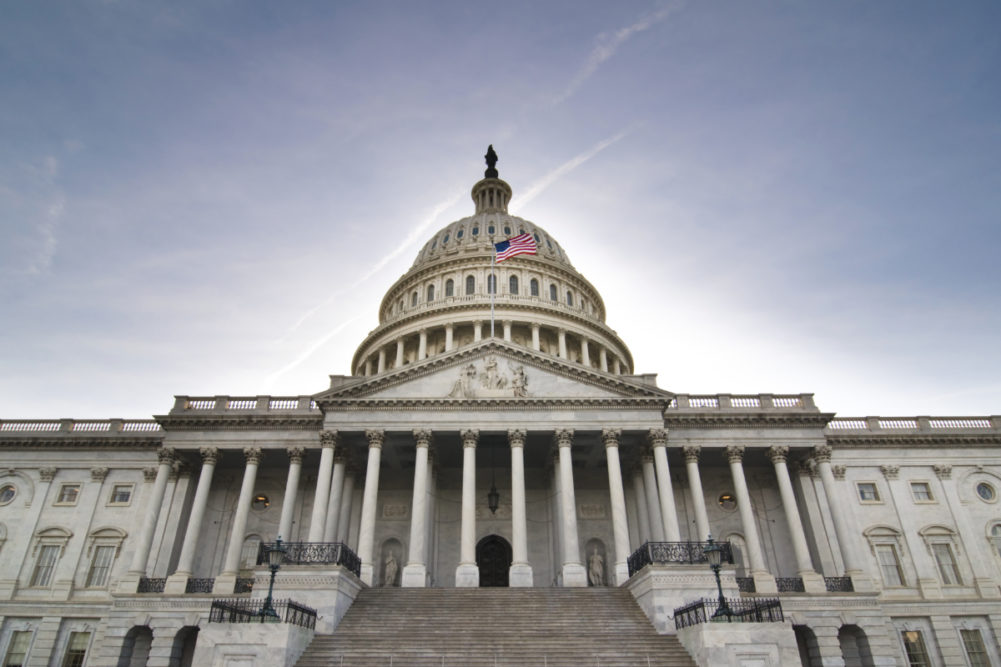WASHINGTON, DC, US — Washington is largely consumed these days with issues around COVID-19, racial/social injustices and how best to re-start the economy, not to mention the coming presidential and congressional elections. Money is being handed out in the trillions, partisanship persists and investigations into egregious mistakes in handling all of this federal largesse will surely follow.
With all of this high decibel noise, it is sometimes hard to hear any notes touching on agricultural interests. Yet there are some that deserve mention — the US-Mexico-Canada Agreement (USMCA), trade with China and food insecurity.
Inside the USMCA
The USMCA quietly went into effect on July 1. It replaced the North American Free Trade Agreement (NAFTA) that had been in place since 1994. USMCA’s revisions to NAFTA largely deal with automobiles, intellectual property and digital commerce, but provisions for challenging dairy and biotechnology actions that restrain trade also were added. President Donald Trump celebrated the new agreement by hosting Mexico’s president while conspicuously snubbing Canada’s prime minister. With Mexico and Canada being two of US agriculture’s largest markets, it is good to have these cross-border relationships settled.
Trade with China
Trade with China, however, seems to be unspooling intermittently but inexorably. A “first phase” deal was signed in January 2020, including prospects for large Chinese purchases of agricultural products and energy from the United States. Since then, energy prices have fallen sharply because of COVID-related shrinkage in demand and supply gluts brought on by Russian and Saudi Arabian efforts to flood the oil market and undermine US energy production. Low oil prices and a weak global economy have cut into the foreign exchange dividend President Trump had hoped to capture.
Meanwhile, US-China bilateral relations have worsened over disagreements around Huawei, Hong Kong and human rights. It appears that any potential “phase two” deal is off the table for now, and uncertainty is growing about China’s willingness to meet even its “phase one” obligations. John Bolton’s “tell all” book about his time as President Trump’s national security adviser included an allegation that President Trump sought Premier Xi’s assistance in his reelection effort, and that publicity may undermine China’s appetite for US agricultural imports. While agricultural commodities are to a certain degree fungible, weakening Chinese demand relative to the “phase one” expectations could weigh down on markets.
Concerns about over-dependence on Chinese manufacturing of drug and medical supplies — highlighted by the coronavirus outbreak — have set off a quest at least for supply-chain diversification and in some cases increased self-reliance. US agriculture’s export-oriented sectors could be threatened by more “self-sufficiency” and “food-as-a-weapon” rhetoric. At the same time, trade and trade negotiations are seeing new demands placed upon them: alongside longstanding interest in labor and environmental standards are new demands for trade to serve “societal interests” in social justice and greater equity for women and minorities. All of this dims prospects for any early return to a highly functioning globalization.
Food insecurity
Unfortunately, food insecurity globally is on the increase even as multilateral food-supply chains come under stress. The World Food Program projects a doubling in “acute food insecurity” to 270 million people by the end of 2020, putting them on the brink of starvation.
Some of this deterioration stems from man-made crises in war torn regions like Yemen, Syria and Lebanon. Some is caused by invading locusts, especially in East Africa, that are quite literally consuming food crops. Much of it, however, is a byproduct of the pandemic.
The economic shock of the coronavirus is aggravating food insecurity in places like Ethiopia, whose foreign exchange earnings are 50% dependent on a tourism trade that has collapsed. Another example of this shock is Nigeria, where 94% of its export earnings are from oil. Food prices also are beginning to rise in Central and parts of South America. Even the United States is not spared, with Feeding America estimating that Americans will miss 8 billion meals this year. Overall, COVID-19’s aftershocks are likely to cost the global economy about 1.7 billion jobs and $100 billion in worker remittances back to their home countries.
Food aid is increasing in response. The World Food Program budget for 2020 will be up about 40%, to $8.4 billion. Even so, it and other relief programs cannot offset the erosion in food demand that is occurring in the worst economic climate in a century. As food insecurity rises, so too do pressures for immigration and, ironically, for more food nationalism, as countries consider export controls and resist calls for sharing food supplies. All of these factors depress demand for commercial exports while failing to make up the loss through aid initiatives.
Food system under stress
The global food system that has done so much to reduce hunger over the past 20 years while boosting the American farm economy is now under serious stress. It may not grab the headlines in the same way that the pandemic, the economic crisis and electioneering have, but it is a serious problem. Addressing it constructively will require more attention and leadership than it has received to date.
Follow our breaking news coverage of the coronavirus/COVID-19 situation.





